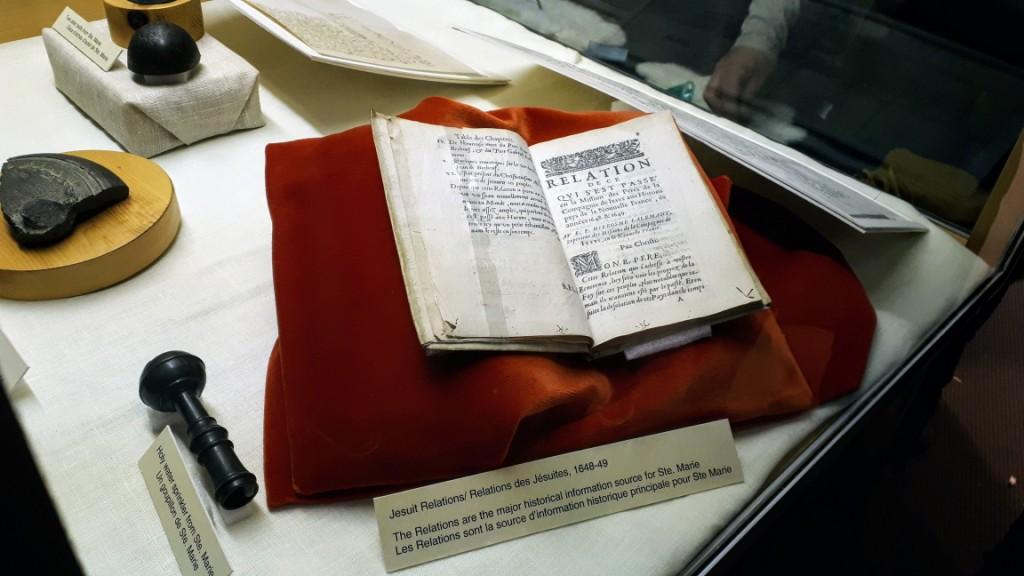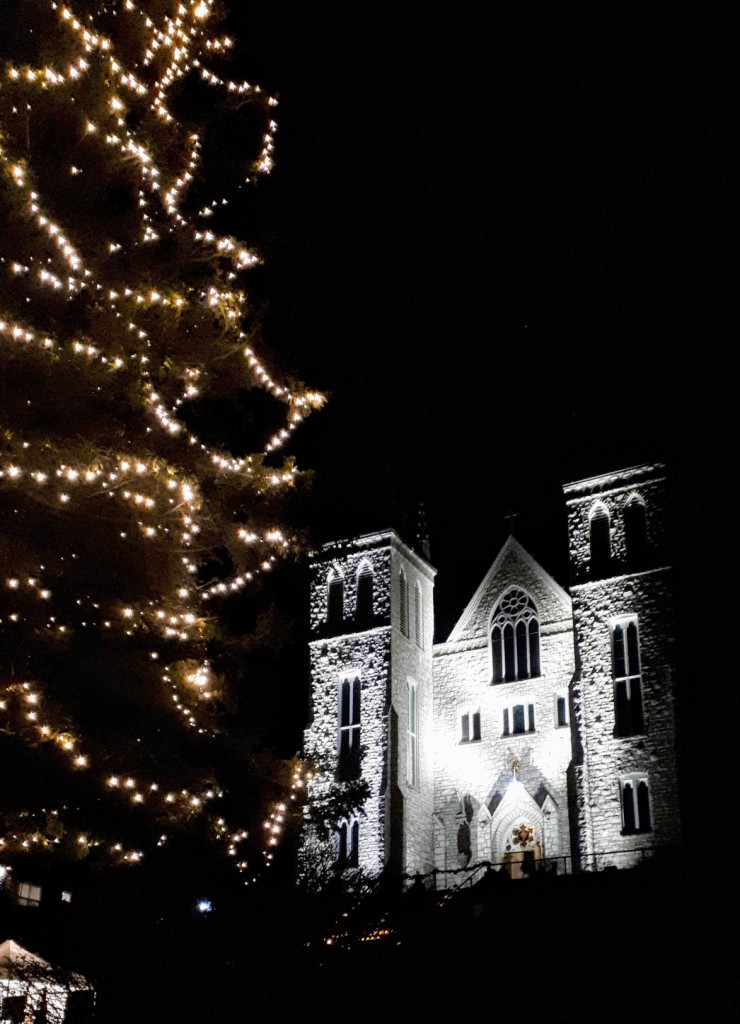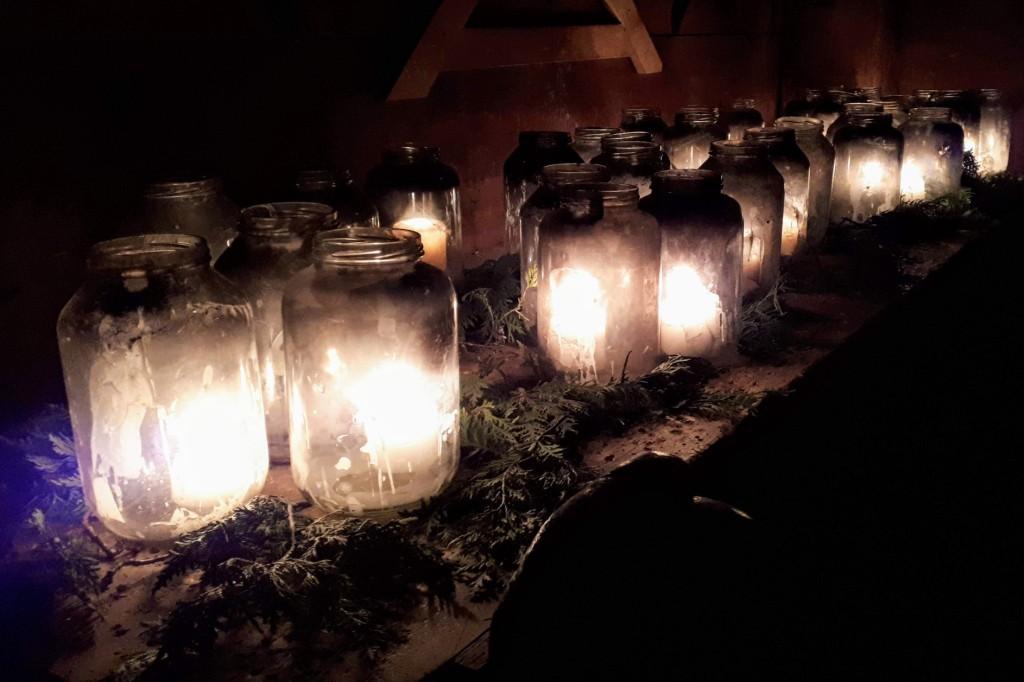Let us consider the Jesuit Relations.
First things first. Last night I attended the First Light festival at Sainte-Marie Among the Hurons in Midland, Ontario, a town on Georgian Bay about two hours’ drive north of Toronto.
What is Sainte-Marie Among the Hurons? From the Historic Sites and Monuments Board of Canada plaque:
For a decade Sainte-Marie was a major French community, the earliest in what is now Ontario. Prolonged daily contact between native people and Europeans profoundly affected both groups.
By the winter of 1648-1649, Huronia was so ravaged by disease and conflict that the Jesuits abandoned and burned Sainte-Marie and with some Wendat followers moved to Christian Island.
The following year the Jesuits and Hurons withdrew to Québec.
I’ve visited Sainte-Marie twice before, with a school trip in Gr. 8 and with my family five years ago. It’s a fascinating living history museum, affiliated with the Government of Ontario through the Ministry of Heritage, Sport, Tourism and Culture Industries. (Other such museums I’ve visited this year include the Art Gallery of Ontario, Royal Ontario Museum, McMichael Canadian Art Collection, and Ontario Science Centre.)
Here’s a short video about the site.
Last night the museum was filled with craft vendors (knitting, woodworking, jewellery, etc.), which was great but which prohibited really appreciating the museum. One case containing religious artefacts did catch my attention, though. In it was one book dated 1648-49 (probably original?) of the Jesuit Relations.

A retired archaeologist friend had received a full set of the volumes of the Jesuit Relations as a gift, so I knew they were special, and I’d heard of them before from previous visits to Sainte-Marie. Exactly what are they though? This from the Canadian Encyclopedia:
As a result of Cardinal Richelieu’s decision to enlist the Jesuits in colonizing French North America, the early history of settlement was systematically and colourfully documented by priests attempting to convert Indigenous people and also to attract support at home for their project.
The journals and letters of Paul le Jeune, Jérôme Lalemant, Jean de Brébeuf and Paul Ragueneau, among others, dramatize tribal warfare in Huronia and the day-to-day life of colonists in Acadia; these are supplemented by ‘relations’ of Jesuit participation in colonial matters throughout the New World.
Invaluable as ethnographic and documentary sources, the Jesuit Relations were avidly and widely read in the 18th century, along with the works of Cartier and Champlain, as exciting travel literature.
Reuben Gold Thwaites edited 73 volumes as The Jesuit Relations and Allied Documents, Travels and Explorations of the Jesuit Missionaries in New France 1610-1791 (1896-1901), presenting annotated parallel versions of his translations and the French, Latin and Italian original texts.
The book on display at Sainte-Marie is Volume 33 of 1648-49. Among its contents, for example, the volume has a letter of March 1, 1649, from Fr. Paul Ragueneau to his superior in Rome, saying:
The missionary best known to me, Fr. Jean de Brébeuf, was, if I understand this correctly, murdered by invading Iroquois two weeks after that letter was written, in the Huron village of St. Ignace, near Sainte-Marie. Relics of St. Jean de Brébeuf are displayed at the Martys’ Shrine near Sainte-Marie, which I also visited last night.

Sainte-Marie Among the Hurons is museum no. 84 in my #100museums challenge (see 100 Museums Challenge).

